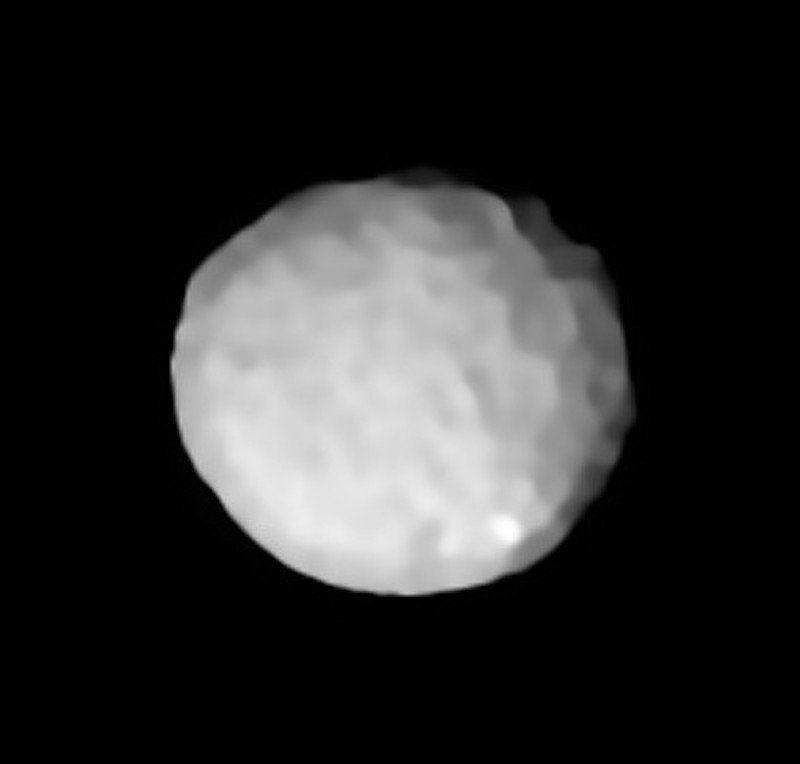Astronomers Snap New Images Of Huge Asteroid Pallas | Astronomy | Sci-News.com Asteroid Pallas
Astronomers using the Spectro-Polarimetric High-contrast Exoplanet Research (SPHERE) imager, an instrument installed on ESO’s Very Large Telescope (VLT) at the Paranal Observatory in Chile, have imaged Pallas, the third largest asteroid in the main asteroid belt.
These images, taken by the SPHERE instrument on ESO’s Very Large Telescope, show the asteroid Pallas. Image credit: ESO / M. Marsset et al / MISTRAL algorithm, ONERA & CNRS.
was discovered by the German astronomer Heinrich Wilhelm Matthäus Olbers on March 28, 1802.
Named after the Greek goddess Pallas Athena, Pallas is about 512 km (318 miles) wide.
This makes it the in the main belt and one of the biggest asteroids in the entire Solar System.

Pallas about 7% of the mass of the entire asteroid belt — so hefty that it was once classified as a planet.
Although Pallas is the largest known asteroid in the Solar System after Ceres and Vesta, it is the only one of these large asteroids that has not been visited by a spacecraft.
This is due to its orbit, which has an unusually high inclination to the plane of the Earth’s orbit — which means it is particularly challenging to land a spacecraft on.
The new images from the SPHERE imager show that the surface of Pallas displays very interesting topographic features suggesting a violent collisional history.

Numerous large craters are found in both hemispheres of Pallas, forming a surface resembling a golf ball.
The two distinct large impact basins on its surface could also be related to a family-forming impact — a collision which caused an original object to fracture into several separate bodies.
The bright spot which appears in the southern hemisphere of Pallas is also very reminiscent of the salt deposits on Ceres.

0 Comments
Posting Komentar